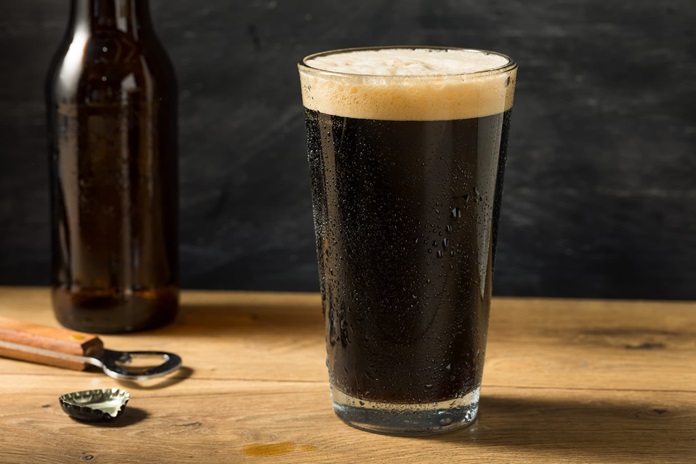International Stout Day is celebrated on the first Thursday in November each year. Stouts were developed by porters in the 1700s and have become a favorite beer around the world. Stouts were officially recognized on November 3, 2011, with the creation of International Stout Day. Stouts is known for its robust flavor as the name implies. Although they might not be the easiest to chug, they are ideal for sipping and savoring.
History of International Stout Day
First, a quick note on the subtle difference between stouts and porters: According to VinePair, the main distinction is the type of malt used. Porters are brewed with malted barley, while stouts are made from unmalted roasted barley, which gives stouts their characteristic coffee flavor.
Porters originated in London in the early 1720s. They quickly became popular for their strong flavor, long freshness, and affordable price. English breweries began exporting them to Ireland, and by 1776, Arthur Guinness was brewing porters at his St. James’s Gate Brewery.
Over the next century, stouts evolved to include black patent malt, giving them their signature black color and even stronger flavor.
Moreover, the first stouts were brewed in the 1730s. The Russian Imperial Stout, developed in the 1800s, was crafted to impress the Russian Czar. The term “Imperial porter” was used before “imperial stout,” and the earliest recorded use of “Imperial” to describe a beer dates back to 1821.

The adjective “stout” originally meant “proud” or “brave,” but over time it came to signify “strong.” The first recorded use of the word “stout” to describe beer was in 1677.
The term “stout porter” emerged in the 18th century, and “stout” was initially used to describe any strong beer (for example, “stout pale ale” in the UK). It wasn’t until later that “stout” became specifically associated with dark beer.
Today, stouts come in many varieties, such as “milk,” “oatmeal,” and “chocolate” stouts. While these terms don’t always mean the specific ingredients are included in the brew, they certainly sound appealing.
Timeline of International Stout Day
| 1730s (Stouts are Born from Porters) | Stouts are differentiated from porters through the use of unmalted roasted barley. |
| 1840s (Guinness Begins Brewing) | Guinness brews its first stouts, which are now the most popular in the world. |
| November 3, 2011 (First International Stout Day Held) | Stouts are finally given their due credit and recognition. |
| 2019( “Gumbo Stout”) | According to its Louisiana brewery, “The beer has a roasted and smoky flavor from the roux and barley, accentuated by salt, cayenne, and black peppers.” |
5 Interesting Facts About Stout
- Irish Roots: Stout beer has deep connections to Ireland where it gained popularity in the 1700s. Guinness stands out as the most well-known example starting its stout production in 1759 and becoming linked with this beer style.
- From Porter to Stout: Stouts grew out of porters, a dark beer that Londoners loved in the 1700s. At first, “stout” meant “strong” and described powerful porters. As time passed, “stout” came to mean a unique beer type with its own traits.
- Many Types: You’ll find different kinds of stout such as dry stout (think Guinness) oatmeal stout (which uses oatmeal to create a smooth feel), milk stout (with lactose to add sweetness), and imperial stout (a stronger version with more alcohol).
- Taste Profile: Stouts often have deep roasted tastes that bring to mind coffee and chocolate. These rich flavors come from the roasted barley or malt used in brewing, which gives the beer its complex taste.
- Health Myths: In the past, people thought stouts had health perks because of what they contained. Back in the 1800s, some doctors even told pregnant women and sick people to drink stout. They believed it would give them nutrients and help them get better.
Conclusion
In conclusion, International Stout Day celebrated on the first Thursday of November, provides a perfect opportunity to appreciate the rich history and diverse flavors of stouts. From their origins in 18th-century London as robust porters to their evolution into a globally beloved beer style, stouts have a storied past marked by innovation and tradition.
The development of various stout varieties—from the classic dry stout to the unique “gumbo stout”—demonstrates the versatility and enduring appeal of this beer. Whether you’re savoring a smooth milk stout or enjoying the bold flavors of an imperial stout, International Stout Day invites enthusiasts to celebrate and explore the depth of this distinguished beer style. Cheers to the history, variety, and continued evolution of stouts!
Frequently Ask Question
What is the difference between stouts and porters?
The main difference is the type of malt used: porters are brewed with malted barley, while stouts are made from unmalted roasted barley. This difference gives stouts their distinctive coffee-like flavor.
When did stouts first originate?
The first stouts were produced in the 1730s.
What is a Russian Imperial Stout?
The Russian Imperial Stout was developed in the 1800s to impress the Russian Czar. It was originally referred to as “imperial porter,” with the term “imperial” first used to describe beer in 1821.
What does the word “stout” mean in relation to beer?
Originally, “stout” meant “proud” or “brave,” but it eventually came to signify “strong.” The first known use of “stout” for beer was in 1677. The term “stout porter” appeared in the 18th century, and “stout” was initially used to describe any strong beer.
What types of stouts are available today?
Stouts come in various types, including “milk,” “oatmeal,” and “chocolate” stouts. Although these names suggest specific ingredients, they don’t always reflect the actual contents of the brew.
You may also like to read, National Buffet Day – January 2
